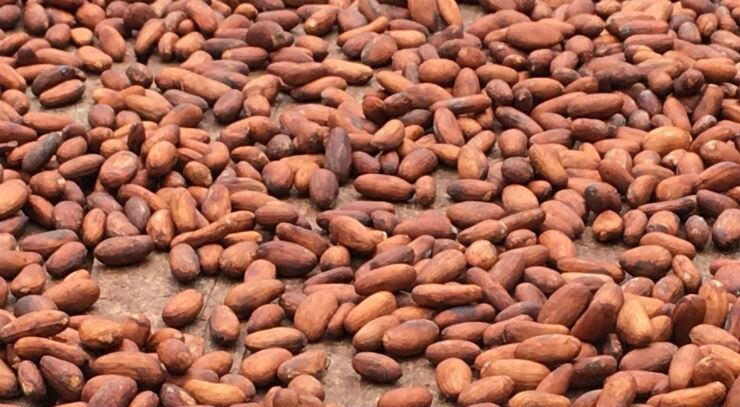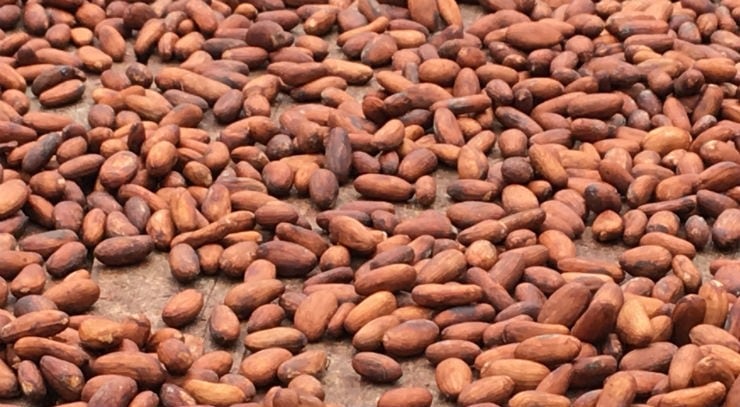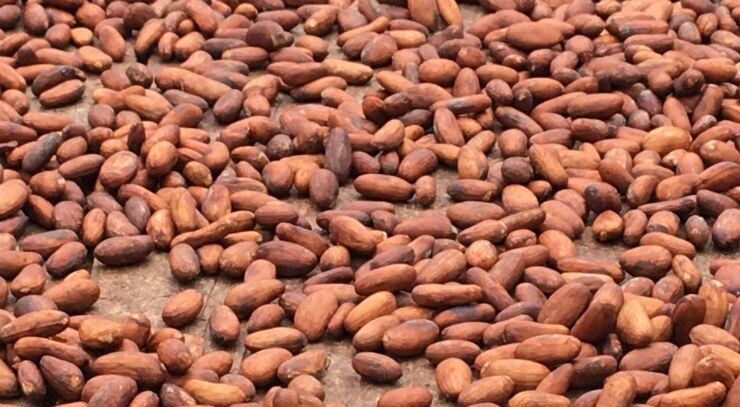Cocoa prices were undercut at the start of the week after the latest monthly report from the International Cocoa Organization (ICCO) revealed that cumulative volumes of arrivals of cocoa beans in Cote d’Ivoire at the beginning of this month were reported at 348,000 tonnes, down by 23% year-on-year compared to 452,000 tonnes recorded during the corresponding period of the previous season.
Barchart.com reported that last Friday's (18 November 2022) weekly Commitment of Traders (COT) report showed funds boosted their net-long London cocoa positions by 1,027 to a 3-year high of 74,561 long positions in the week ended Nov 15. For NY cocoa, the COT report showed that funds flipped to a 6-month high net-long position of 4,865 in the week ended 15 November.
In a bullish factor, Ghana reported on 27 July that its 2021/22 cocoa crop fell by -35% y/y to 685,000 MT, the smallest crop in 12 years, due to drought and swollen shoot virus. Ghana is the world's second-largest cocoa producer.
Cocoa prices have also been affected by reports that the rainy season recently caused an outbreak of black pod disease in some West African growing areas. In addition, cocoa farmers continue to struggle with the lack of fertilizer and pesticides. The war in Ukraine has limited Russian exports of potash and other fertilizers worldwide.
Fertilizer prices
A further reduction in cocoa yields is expected should torrential rainfall persist, as soil nutrients will be washed away. And, this will further exacerbate the current problem associated with increasing fertilizer prices.
In neighbouring Ghana, while no fresh data were available on the level of volumes of graded and sealed cocoa beans for the 2022/23 season, the situation is being closely monitored as the country recorded a drastic cut in production compared to last season, due in part to the devastating effect of the Cocoa Swollen Shoot Virus Disease (CSSVD), illegal mining on cocoa farms and reduced use of fertilizer due to the high prices, the ICCO reported.
Traders are also keeping a close eye on a strike by dock workers in the Cote d’Ivoire’s port of San Pedro, which could spread to other ports, thus reducing global cocoa supplies. The strike has already disrupted the transportation of cocoa supplies from farms to ports in Cote d’Ivoire.
Another risk to global cocoa supplies, barchart.com reports, is the standoff between the Cote d’Ivoire cocoa regulator and the world's major cocoa buyers after a government-imposed premium made Côte d’Ivoire’s cocoa supplies less competitive in the global market, which resulted in fewer forward-sales contracts. As a result, the Cote d’Ivoire regulator has threatened to prevent traders from buying cocoa from farmers if if those forward sales don't resume.
Smaller cocoa supplies from Nigeria are bullish for prices after a 28 Octber report showed Nigeria's September cocoa exports fell -16% y/y to 11,094 MT due to excessive rain. Nigeria is the world's fifth-largest cocoa bean producer.
Uncertain demand
Following the recovery in grindings in 2021-22 on the back of the economic recovery from the COVID 19 pandemic, mixed results have been posted by members of the European Cocoa Association (ECA), Cocoa Association of Asia (CAA) and National Confectionery Association (NCA) – who held about 56% of the world share of grindings in 2021-22.
For the 2021-22 cocoa season, cocoa processing activities increased year-on-year in Europe and Southeast Asia, whereas they dropped in North America. On a crop year basis, the ECA posted data indicating that cumulative grindings in Europe during 2021-22 increased year-on-year by 2.68% from 1,434,631 tonnes to 1,473,084 tonnes, while the CAA published data showing a 4.79% increase from 863,239 tonnes to 904,597 tonnes.
However, total grindings in North America witnessed a year-on-year decline of 3.44% from 483,078 tonnes to 466,451 tonnes according to the total quarterly statistics published by the NCA.
The ICCO said that the latest mixed grindings data suggest that cocoa demand at the start of the 2022-23 season remains uncertain due to the current global macroeconomic narrative on high inflation, interest rates, slow growth and concerns about energy price increases.



